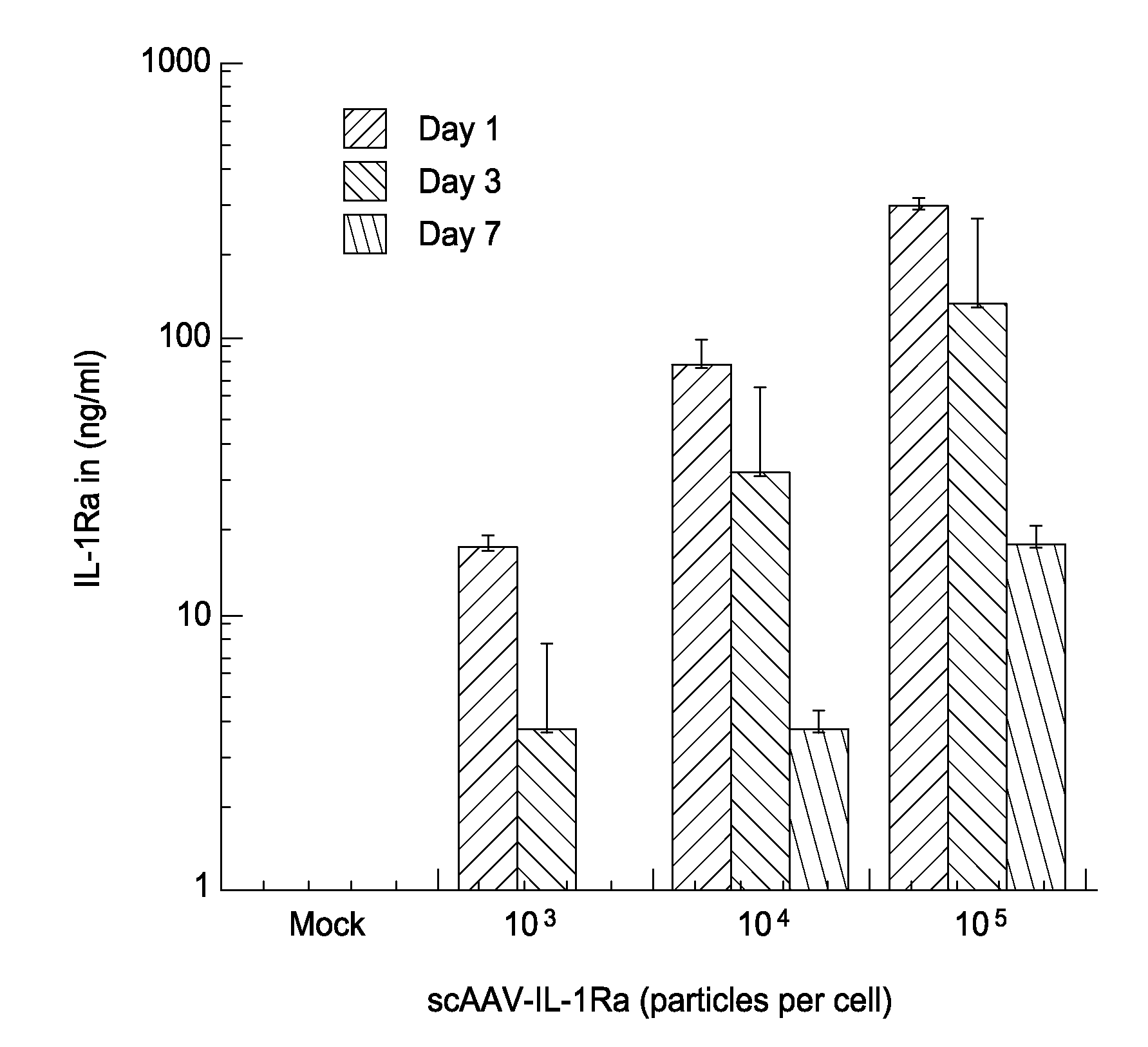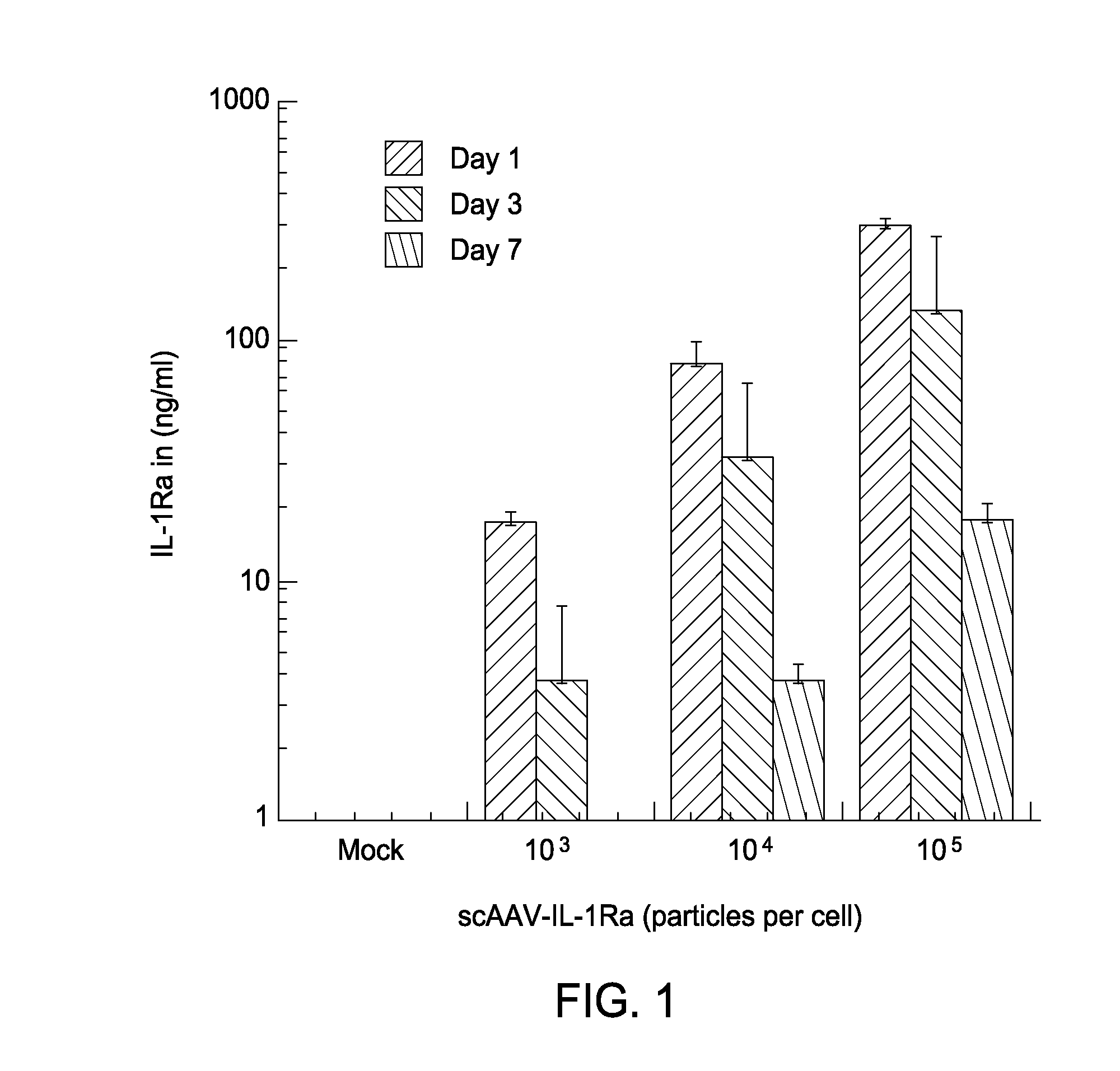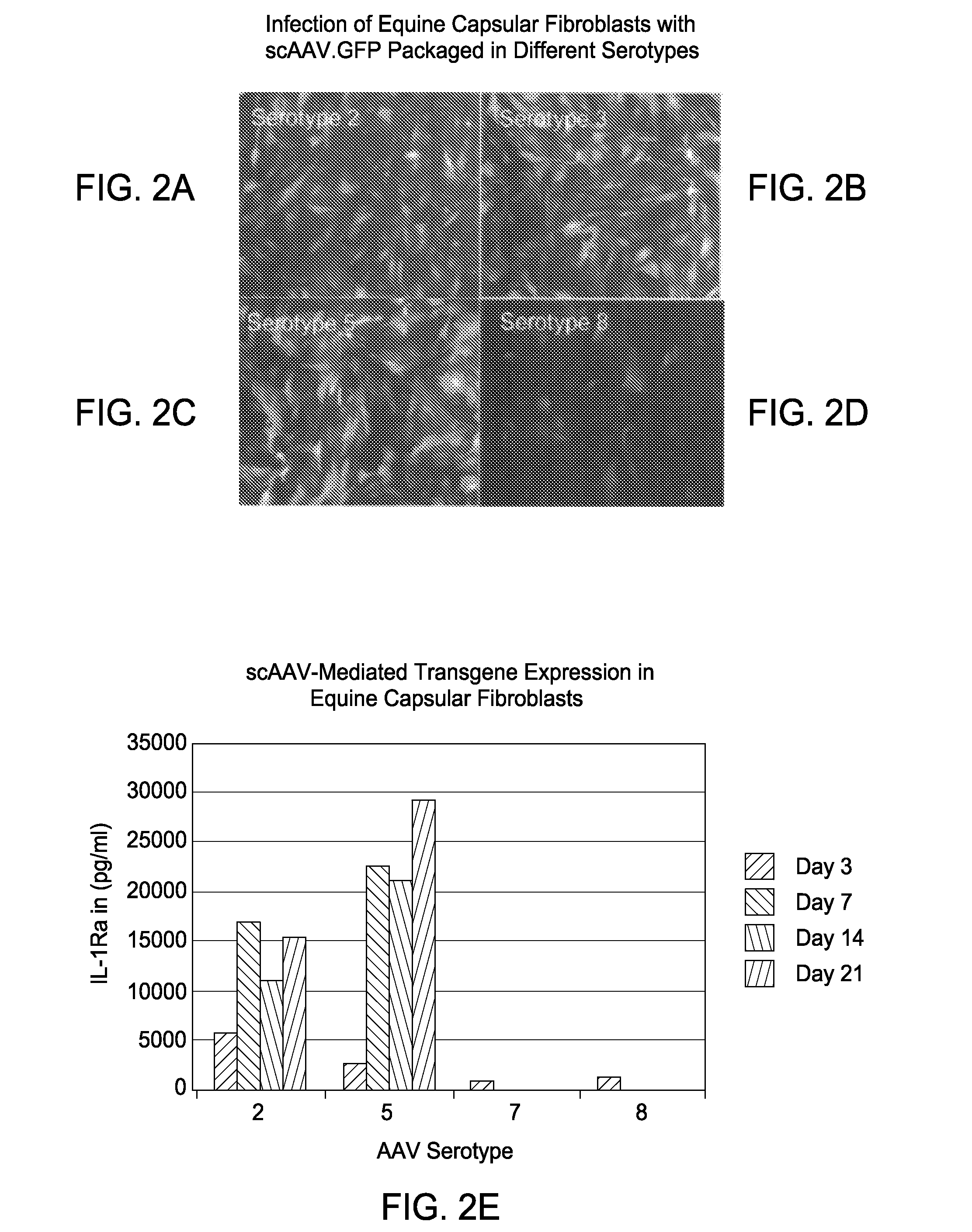Methods for treating articular disease or dysfunction using self-complimentary adeno-associated viral vectors
a technology of articular disease and dysfunction, which is applied in the field of medicine and viral vector based gene therapy, can solve the problems of limited half-live, high cost of recombinant proteins, and high cost to consumers, and achieves long-term relief, maintain the therapeutic level of joints, and effective and lasting effects
- Summary
- Abstract
- Description
- Claims
- Application Information
AI Technical Summary
Benefits of technology
Problems solved by technology
Method used
Image
Examples
example 1
5.1 Example 1
[0168]The present example describes the result of studies using scAAV-based gene transfer as a means to treat various diseases and injuries of the joint. By delivering DNA encoding therapeutic agents to cells in and surrounding the joint tissues, the genetically modified cells are adapted to become factories for the sustained, localized production of the gene products. This strategy has been successful as a means to deliver therapeutic gene products to the joints of animals for the treatment of chronic joint diseases, such as arthritis.
[0169]The present example demonstrates that the use of AAV vectors that are self complementary (sc) (i.e., double stranded, containing both + and − DNA strands), overcome the limitation imposed by single-stranded vectors. scAAV vectors provide very high levels of gene expression with a rapid onset, both in vitro in fibroblastic cells cultured from the synovium and connective tissues comprising and surrounding the joint tissues (from human...
example 2
5.2 Example 2
[0171]In studies using scAAV vectors, it was shown that following intra-articular injection, the AAV particles traverse the joint capsule to enable efficient transduction (genetic modification) of cells within the fibrous tissues of the joint capsule and in tissues that immediately surround the joint capsule. Gene transfer occurs primarily in cells of the periarticular muscle and connective tissues (FIG. 4A and FIG. 4B). These genetically modified cells then produce therapeutic transgene products proteins that through either diffusion or active transport mechanisms enter the joint space where the released gene products mediate a beneficial or therapeutic response. Because the large majority of gene transfer occurs in cells that are not part of the synovial lining, the genetically modified cells are not subject to the physical forces found intra-articularly. The cells are not rapidly lost and thus, are capable of stable expression of therapeutic transgene. This makes loc...
example 3
5.3 Example 3
[0172]Determining the levels and persistence of intra-articular expression enabled by the scAAV vector following delivery of homologous transgenes to the joints of experimental animals:
[0173]Several factors can contribute to limiting the expression of a transgene over time. Among the primary players are 1) immune elimination of transduced cells that express foreign (non-self) gene products. These can be in the form of cross species transgenes or native viral proteins from the vector. Since AAV vectors do not contain coding sequences for viral proteins, half of this concern is eliminated. Additional reasons are 2) loss of non-integrated viral genomes due to cell division and 3) loss of genetically modified cells due to natural turn over.
[0174]To determine the persistence of transgenic expression two studies have been developed. In the first, the rat homologue of the soluble tumor necrosis factor alpha receptor (ratTNFr) cDNA has been inserted into an scAAV plasmid vector...
PUM
| Property | Measurement | Unit |
|---|---|---|
| Fraction | aaaaa | aaaaa |
| Fraction | aaaaa | aaaaa |
| Cell angle | aaaaa | aaaaa |
Abstract
Description
Claims
Application Information
 Login to View More
Login to View More - R&D
- Intellectual Property
- Life Sciences
- Materials
- Tech Scout
- Unparalleled Data Quality
- Higher Quality Content
- 60% Fewer Hallucinations
Browse by: Latest US Patents, China's latest patents, Technical Efficacy Thesaurus, Application Domain, Technology Topic, Popular Technical Reports.
© 2025 PatSnap. All rights reserved.Legal|Privacy policy|Modern Slavery Act Transparency Statement|Sitemap|About US| Contact US: help@patsnap.com



